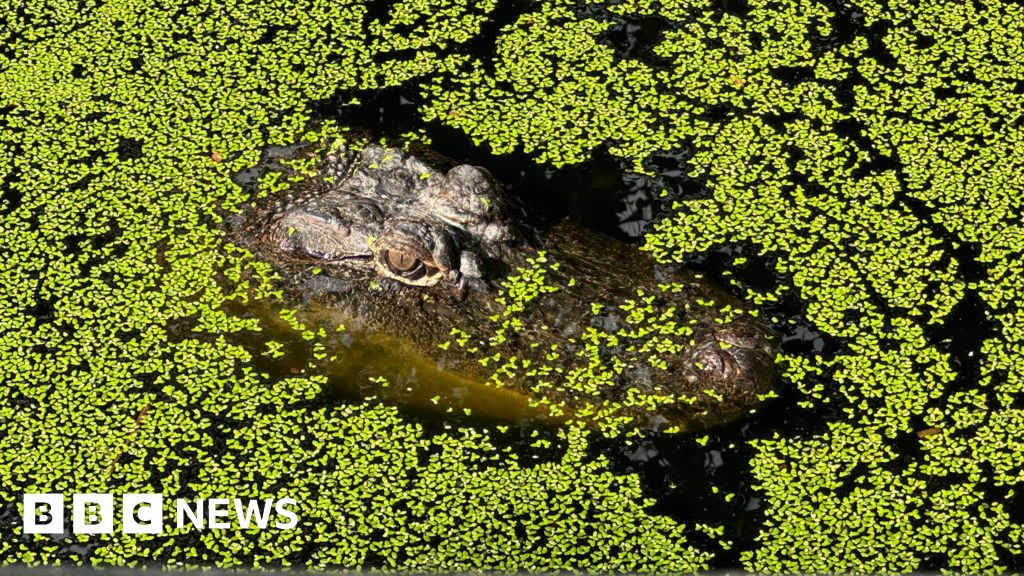Crocodile Conservation: A Balancing Act in Northern Territory

Saltwater crocodiles, known locally as “salties,” have made a remarkable recovery in Australia’s Northern Territory (NT). Once on the brink of extinction, these apex predators now thrive in the region. This article explores the journey of saltwater crocodiles from near extinction to their current status, the challenges of coexisting with them, and the economic implications of their resurgence.
The Rise of Saltwater Crocodiles
Saltwater crocodiles were nearly hunted to extinction in the Northern Territory during the mid-20th century. After World War II, the demand for crocodile skins surged, leading to a drastic decline in their population. By the 1970s, only about 3,000 salties remained in the wild. Recognizing the urgent need for conservation, the Australian government banned crocodile hunting in 1971. This decision marked the beginning of a significant recovery for the species.
Today, the NT is home to an estimated 100,000 wild saltwater crocodiles, more than anywhere else in the world. The capital city, Darwin, is surrounded by beaches and wetlands, creating an ideal habitat for these reptiles. The recovery has been so successful that the government now faces a new challenge: managing the growing crocodile population to ensure public safety. Experts warn that if people turn against crocodiles, it could lead to knee-jerk reactions from politicians, potentially jeopardizing the species once again.
Living with Predators
The Northern Territory’s warm climate and abundant water sources provide an ideal environment for saltwater crocodiles. These reptiles are territorial and aggressive, making them formidable predators. While fatal encounters with humans are rare, they do occur. For instance, a tragic incident last year resulted in the death of a 12-year-old, marking the first crocodile-related fatality in the NT since 2018.
During the breeding season, which has just begun, crocodiles become more active and mobile. Government ranger Kelly Ewin and his team work tirelessly to monitor and manage crocodile populations in Darwin Harbour. They check 24 traps several times a week to capture any crocodiles that pose a threat to public safety. Ewin emphasizes that while they cannot catch every crocodile, removing as many as possible reduces the risk of human encounters.
Education plays a crucial role in ensuring public safety. The NT government runs a program called “Be Crocwise,” which teaches residents and visitors how to behave responsibly around crocodile habitats. This initiative has gained international attention, with Florida and the Philippines looking to adopt similar programs to manage crocodile populations in their regions.
Economic Impact of Crocodile Management
The resurgence of saltwater crocodiles has significant economic implications for the Northern Territory. While they pose risks, they also attract tourists eager to witness these magnificent creatures. Tour operators offer thrilling experiences, such as “croc jumping” shows, where crocodiles leap out of the water for food. This tourism boom has created jobs and boosted the local economy.
Crocodile farming has also emerged as a vital industry in the NT. With an estimated 150,000 crocodiles in captivity, the farming sector has become an economic driver. Luxury fashion brands, including Louis Vuitton and Hermès, source crocodile leather for their high-end products. This commercial incentive helps foster a social license for crocodile farming, allowing communities to benefit financially while promoting conservation efforts.
However, the farming industry is not without controversy. Animal rights activists raise concerns about the treatment of crocodiles in captivity. Critics argue that confining these social animals to individual pens for skin quality compromises their welfare. Despite these concerns, many in the industry believe that farming can contribute to conservation by providing economic alternatives to hunting.
Challenges Ahead
As the crocodile population continues to grow, the Northern Territory faces ongoing challenges in managing their numbers. Last year, the government approved a new 10-year crocodile management plan, increasing the annual quota for crocodiles that can be killed from 300 to 1,200. This plan aims to balance public safety with conservation efforts.
Every crocodile-related incident reignites the debate about how to coexist with these predators. Following the tragic death of the young girl, local leaders emphasized the need to ensure that crocodiles do not outnumber humans in the NT. With a human population of around 250,000, the conversation about crocodile management extends beyond the NT, as neighboring regions also grapple with similar issues.
Observer Voice is the one stop site for National, International news, Sports, Editor’s Choice, Art/culture contents, Quotes and much more. We also cover historical contents. Historical contents includes World History, Indian History, and what happened today. The website also covers Entertainment across the India and World.

